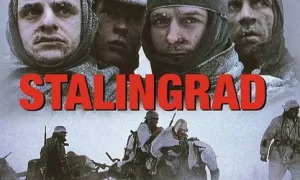The defense of the Brest fortress in June 1941 – defensive military operations of the units of the Workers ‘and Peasants’ Red Army (RKKA) of the Armed Forces of the USSR against the advancing troops of Nazi Germany, which took place in the area of the Brest Fortress and within the city of Brest. It is one of the first battles of the Great Patriotic War.

On the eve of the war
As of June 22, 1941, the day of the sudden invasion of the territory of the USSR by German troops, units of the 17th Red Banner Brest Border Detachment, several units of the 132nd separate battalion of the NKVD escort troops, 8 rifle and 1 reconnaissance battalions, 2 artillery battalions were located in the Brest Fortress. In total at least 7 thousand people, not counting the members of 300 families of Soviet military personnel.
The storming of the fortress, the city of Brest and the capture of bridges across the Western Bug and Mukhavets was entrusted to the 45th Infantry Division (45th Infantry Division ) of the Wehrmacht, Major General Fritz Schlieper (about 15 thousand people) with reinforcement units. To conduct artillery preparation during the first five minutes of the division, mortar divisions of the 31st and 34th infantry divisions of the 12th Army Corps of the 4th Army were attached.
Storming the fortress
In addition to the divisional artillery of the 45th Infantry Division of the Wehrmacht, nine light and three heavy batteries, a high-power artillery battery (two super – heavy 600-mm self-propelled mortars “Karl”) and a division of 210-mm mortars (21 cm Mörser 16). In addition, the commander of the 12th Army Corps, during the first five minutes of artillery preparation, concentrated the fire of two divisions of the same mortars of the 34th and 31st Infantry Divisions on the fortress. The total planned consumption of artillery ammunition amounted to over 7 thousand rounds with a caliber of 105 mm and above. Order to withdraw units from the fortress 42nd Infantry Division, personally given by the commander of the 4th Army of the Red Army, Major General A. A. Korobkov, to the chief of staff of the division by phone from 3 hours 30 minutes to 3 hours 45 minutes, before the start of hostilities did not have time to complete…


On June 22, at 04:00 (Soviet “decree” time), German artillery began a massive shelling of the eastern outskirts of the city of Brest, and at 04:15 the fire was transferred to the fortress and the Northern town, catching the garrison by surprise, from the fortress there were reports of casualties and the wounded. As a result, warehouses were destroyed, the water supply system was damaged (according to the words of the surviving defenders, there was no water in the water supply system two days before the assault), communication was interrupted, and serious damage to the garrison was inflicted. At 03:23, the assault on the Volynsky, Kobrin and Terespolsky fortifications of the fortress began. Directly on the fortress, up to one and a half thousand infantry from three battalions of the 45th Infantry divisions. The unexpectedness of the attack led to the fact that the garrison could not provide a unified coordinated resistance and was split into several separate centers. The assault detachments of the first wave of Germans, advancing on the fortress, passed to the Northern gates of the Kobrin fortification without encountering resistance. However, their second wave was met by the units of the garrison that had gone over to the counter-attack. Thus, the attackers were dismembered and partially destroyed. They met strong resistance on the Volynsky and, especially, on the Kobrin fortification, where it came to bayonet attacks.


By noon, the situation had stabilized. The Germans were able to gain a foothold only in certain sections of the citadel, including the club building dominating the fortress (the former Church of St. Nicholas), the canteen for the commanding staff and a section of the barracks at the Brest Gate, on Terespolsky, on part of the Volyn and west of the Kobrin fortifications.
A group of fighters under the command of Captain V.V.Shablovsky fought in the area of the Western Fort and the houses of command personnel on the Kobrin fortification.
In the area of the Terespolskie gates, groups under the command of Senior Lieutenant A.E. Potapov (in the basements of the 333rd Infantry Regiment barracks) and border guards of the 9th frontier outpost of Lieutenant A.M. Kizhevatov (in the building of the border outpost) continued to fight.
By 07:00 on June 22, the 42nd and 6th rifle divisions had left the fortress and the city of Brest however, many of the servicemen of these divisions did not manage to get out of the fortress. It was they who continued to fight in it. According to the estimates of the historian R. Aliyev, about 6 thousand people left the fortress, and about 9 thousand remained in it. According to other sources, on June 22, there were only from 3 to 4 thousand people in the fortress, since part of the personnel of both divisions was outside the fortress – in summer camps, in exercises, on the construction of the Brest fortified area (sapper battalions, an engineer regiment, one battalion each from each rifle regiment and a battalion from artillery regiments).
From the combat report on the actions of the 6th Infantry Division:
At 4 o’clock in the morning on June 22, hurricane fire was opened on the barracks, on the exits from the barracks in the central part of the fortress, on bridges and entrance gates and on the houses of the commanding staff. This raid caused confusion and panic among the Red Army personnel. The command staff, attacked in their apartments, was partially destroyed. The surviving commanders could not penetrate the barracks because of the strong barrage of fire placed on the bridge in the central part of the fortress and at the entrance gate. As a result, the Red Army and junior commanders without control from the middle commanders, dressed and undressed, in groups and one by one, left the fortress, overcoming the bypass channel, the Mukhavets River and the fortress shaft under artillery, mortar and machine-gun fire. It was not possible to take into account the losses, since the scattered parts of the 6th division mixed with the scattered units of the 42nd Division, and many could not get to the assembly place because at about 6 o’clock artillery fire was already concentrated on it.
– Sandalov L. M. Combat operations of the troops of the 4th Army in the initial period of the Great Patriotic War
By 9 o’clock in the morning, the fortress was surrounded. During the day, the Germans were forced to bring into battle the reserve of the 45th Infantry Division (2nd Battalion, 135th Infantry Regiment) and the 133rd Infantry Regiment, originally a corps reserve. Also, after the capture of Brest, the 130th Infantry Regiment was withdrawn to the fortress. Thus, the entire 45th Infantry Division was involved in the subsequent siege.
The bulk of the servicemen who remained in the Brest Fortress, deprived of their command, did not take part in the hostilities and during the first days surrendered en masse. In fact, only an insignificant part of the garrison put up active resistance to the enemy. The defenders of the fortress spontaneously united in various battle groups, acting mostly in isolation. A unified command was not organized. In this regard, the garrison of the fortress missed the opportunity to repel the attacks of the units of the 45th Infantry Division, unblock the exits from the fortress and carry out an orderly exit from it, which was quite real.

Defense
June 23rd
On the night of June 23, having withdrawn the troops to the outer ramparts of the fortress, the Germans began shelling, in the intervals offering the garrison to surrender. Surrendered about 1900 people in the western part of the citadel (location 333 bn and 44 bn) and on the North Island. In the eastern part of the citadel, the defenders of the fortress succeeded, having knocked the Germans out of the section of the circular barracks adjacent to the Brest gate, unite the two most powerful centers of resistance remaining on the citadel –
June 24
Having met in the basement of the “House of Officers”, the defenders of the citadel tried to coordinate their actions: a draft order No. 1 dated June 24 was prepared (the author of the text is Captain I.N. Senior Lieutenant A.I.Semenenko), in which it was proposed to create a combined combat group and headquarters headed by Captain I.N.Zubachev and his deputy regimental commissar E.M.Fomin, to calculate the remaining personnel. However, it was not possible to fully implement the plans – the Germans broke into the citadel. A large group of defenders of the citadel led by Lieutenant A.A.Vinogradovtried to break out of the fortress through the Kobrin fortification. But this ended in failure: although the breakthrough group, divided into several detachments, managed to break through the main shaft, its fighters were almost all captured or destroyed by the units of the 45th Infantry Division, which were at the highway that skirted Brest.
By the evening of June 24, the Germans captured most of the fortress, with the exception of the section of the ring barracks (“Officers’ House”) near the Brest (Three-Arched) gates of the citadel, casemates in the earthen rampart on the opposite bank of the Mukhavets (“point 145″) and the so-called ” Eastern Fort ” – its defense, which consisted of 400 soldiers and commanders of the Red Army, was commanded by Major P. M. Gavrilov (commander of the 44th Infantry Regiment). On this day, the Germans managed to capture 1250 defenders of the fortress.
June 25-26
Continued attempts to break through from the citadel were unsuccessful. After blowing up several compartments of the circular barracks of the “House of Officers” on June 25-26, the last 450 defenders of the citadel and point 145 laid down their arms.
June 29-30
In the basements of the 333rd regiment’s barracks at the Terespolskie Gate, the group of A.E. Potapov and the border guards of A.M. Kizhevatov, who joined it, continued to fight until June 29. On June 29, they made a desperate attempt to break through to the south, towards the Western Island, in order to then turn to the east. During the breakthrough, most of its participants died or were captured.
After the Germans dropped 22 500 kg bombs and 1800 kg aerial bombs, the Eastern Fort fell. However, the Germans managed to finally clean it up only on June 30 (due to the fires that began on June 29).
There were only isolated centers of resistance and single soldiers who gathered in groups and organized active resistance, or tried to break out of the fortress and go to the partisans in Belovezhskaya Pushcha (many succeeded). Major P. M. Gavrilov (see the section ” The Last Battle of July 23 “) was among the last to be captured wounded on July 23, 1941, on the 32nd day after the start of the war. One of the inscriptions in the fortress reads: “ I am dying, but I am not giving up! Goodbye, Motherland. 20 / VII-41 “.

The resistance of single Soviet servicemen in the casemates of the fortress continued until August 1941, before A. Hitler’s visit to the fortressand B. Mussolini . It is also known that the stone that A. Hitler took from the ruins of the bridge was discovered in his office after the end of the war. To eliminate the last pockets of resistance, the German high command issued an order to flood the basements of the fortress with water from the Western Bug River.
German troops in the fortress captured about 7 thousand Soviet servicemen (according to the report of the commander of the 45th division, Lieutenant-General Schlieper, on June 30, 101 officers, 7122 junior commanders and fighters were taken prisoner), about 2 thousand Soviet servicemen died in the fortress.
The total losses of the Germans (wounded, killed, missing) in the Brest Fortress amounted to 1197 people, including 87 Wehrmacht officers on the Eastern Front during the first week of the war.
Lessons learned:
- A short, strong artillery fire on old fortress brick walls, reinforced with concrete, deep basements and unobserved shelters does not give an effective result. Long-term targeted fire for destruction and fire of great force is required in order to thoroughly destroy the fortified hearths.
The commissioning of assault guns, tanks, etc. is very difficult due to the unobservability of many shelters, fortresses and a large number of possible targets and does not give the expected results due to the thickness of the walls of the structures. In particular, a heavy mortar is not adapted for such purposes.
Large-caliber bombs are an excellent means of moral shock to those in cover.
- An attack on a fortress, in which a brave defender sits, costs a lot of blood. This simple truth was proved once again during the capture of Brest-Litovsk. Heavy artillery also belongs to the strong overwhelming means of moral influence.
- The Russians in Brest-Litovsk fought extremely stubbornly and persistently. They showed excellent infantry training and proved remarkable will to fight.
– Combat report of the commander of the 45th division, Lieutenant General Schlieper on the occupation of the fortress of Brest-Litovsk, July 8, 1941
Last battle July 23
This is how the last documented battle in the fortress is described in the German report.
Commander of the troops in the General Government (Ia): from the journal of military operations No. 1
About the shootout at the North Gate and the capture of the commander
07/23/1941 In the middle of the day on July 23, the [territory] cleaning team came under fire from the casemate at the Northern Gate, the remaining blocked [in the casemate] enemies fired. 5 people were injured. During the ensuing sweep of the fortress, another soldier was wounded. One Russian senior lieutenant was taken prisoner.
07.24.1941
As a result of combing through the fortress of Brest-Litovsk for the presence of surviving enemies, only 7 dead Russians were found.














